The Blue Ridge Parkway Is a Well-Shared Secret
It's our democratic government's gift to the American people - but its very existence is now under threat
The dogwood leaves are turning red, a gentle reminder that fall is almost here. And as Early Voting approaches, my uneasy anticipation has turned into a steady work schedule to help get out the vote.
For a change of scenery, both literally and mentally, we recently decided to drive up to the Blue Ridge Parkway.
We got in the car, filled up the tank, and set out for Pisgah National Forest on the way to the Parkway. No gas stations up there!
Heading out of Brevard on Route 276, we passed restaurants, a new bicycle shop called The Hub, and Dolly’s ice cream Dairy Bar. If we had been entering the Forest just after 1923, we would have driven under a large stone arch. It was later taken down to widen the road, but whatever became of the bronze eagle is still a mystery.
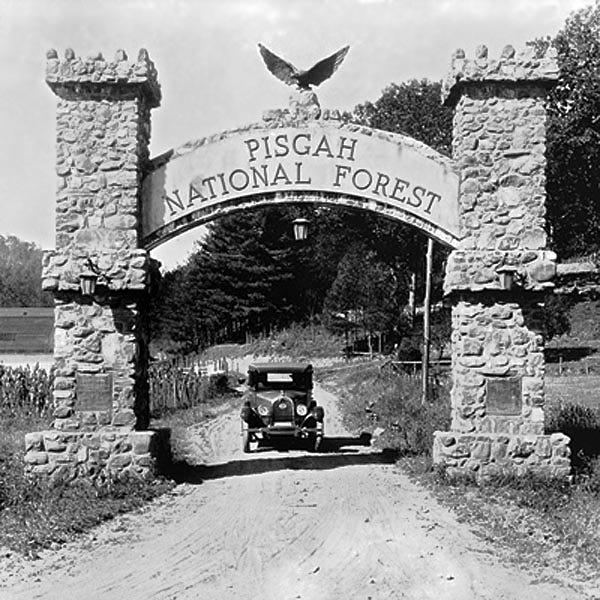
It was a summer weekend that day, and at Looking Glass Falls we had to drive carefully past all the parked cars and people walking by the side of the road. Sliding Rock was the same.
We began our drive that day along a flat stretch of road, chattering about politics, but as we passed trees and rocky streams and began to climb the mountain, the stress of daily life dropped away. I became aware of the calmness the forest offers to anyone who is willing to slow down in mind and body, and to enjoy nature’s quiet turning of the seasons.
At the top of Route 276 we entered the Blue Ridge Parkway, across from the overlook for Cold Mountain. Charles Frazier’s novel, Cold Mountain, was wildly popular when I worked at the local independent bookstore, Highland Books, in 1997. We told tourists how to get to this overlook. I made a cartoon about it.
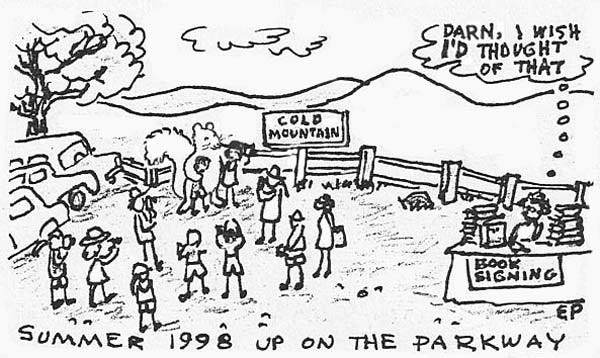
Milepost after milepost, the Blue Ridge Parkway is a magical place to be.
We had our favorite wildflower guide with us.
By design, every curve in the road reveals a new view, whether of gray-blue layers of distant mountains, or a rock face, or blueberries that anyone can stop and pick.
The Blue Ridge Parkway planners shared their vision in 1909. It was for
a pleasure road, a scenic drive for the public to enjoy the spectacular natural beauty of our mountains. There would be views at every turn, with no billboards or commercial interests allowed. Recreation was its reason for being.
The horizon would be the boundary. The structures would be informal, to harmonize with the natural environment. The drive should be easy and safe, as to not distract from the views.
Economic growth came to the region through the Parkway’s construction during the 1930s, when it was most needed.
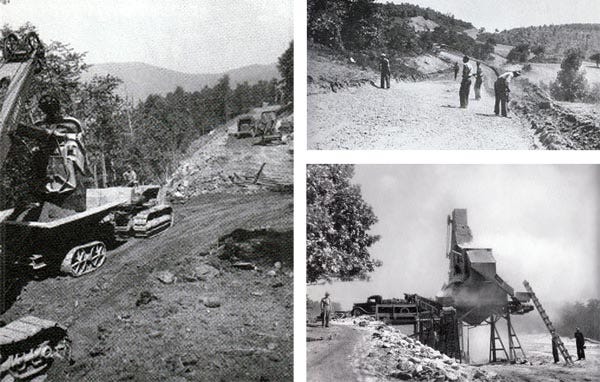
In securing private land, the planners wanted property to be compensated fairly, and the people to be treated with consideration for the culture already in place.
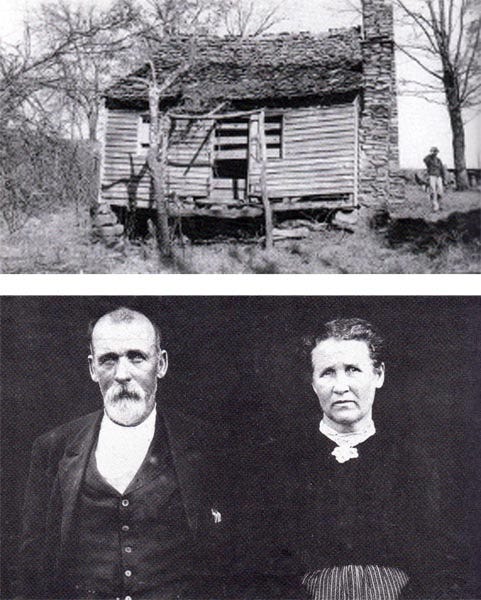
The ways of the people who lived here would not only be respected, they would be shared with visitors for years to come.
It might have been at Mile Marker 431, Heywood-Jackson Overlook, where we parked the car and set up our camp table to brew tea. We sat in folding chairs, looking out over the valley and distant hills, reading aloud from The Comic Mark Twain Reader.
In another book, Look Homeward Angel, Thomas Wolfe’s character Oliver travels to Asheville (which in the novel is called Altamont), over the kind of road that would soon become part of the Parkway. Wolfe wrote,
The next morning he resumed his journey by coach. As the horses strained slowly up the mountain road Oliver's spirit lifted a little. There was a sharp bite and sparkle in the mountain air. Below him a mountain stream foamed down its rocky bed, and he could see little dots of men laying the track that would coil across the hill toward Altamont. Then the sweating team began the slow descent toward the high plateau on which the town of Altamont was built.
In the haunting eternity of these mountains, rimmed in their enormous cup, he found sprawled out on its hundred hills and hollows a town of four thousand people.
There were new lands. His heart lifted.
We, too, felt refreshed as we drove home that day.
Dear reader, I wish I could say that, for all time, we could count on visiting this marvelous, healing forest that is not far from home. But it will all be over if Republican candidates win majorities at the polls this year. When you vote in November, it will be for or against Project 2025.
Recently I heard a panelist, James Carli, tell an audience what a Republican administration would do to the environment. He said,
You can say goodbye to those hiking and camping trips. Project 2025 mandates defunding the Forest Service and the National Park Service, and opening public lands to wide-scale commercial logging, oil and gas extraction, mining, bottled-water companies, and private home developers who will build second and third homes for out-of-state residents.
More than that, the piles of dried biomass left from timber extraction will be a regional fire hazard.
For the first time in its history, semi trucks, tour buses and other commercial traffic would be allowed on the Parkway, potentially jamming the roads and tunnels, and dumping large crowds into our overlooks, picnic areas, and trails.
I’m glad I wasn’t thinking about this as we went back down the mountain that day, past the Cold Mountain overlook and then Sliding Rock. It’s a slow drive that gives you time for a fresh perspective on the doings of people down in our county who are hard at work laying roadbeds for our political future.
Will that future be a good one for all the people, or only for a few?
You want a future with a chance for everyone to be healthy, to be able to freely enjoy natural beauty, with respect for all people and with consideration for the cultures already in place.
You go back down there and get to work, for Democratic candidates.
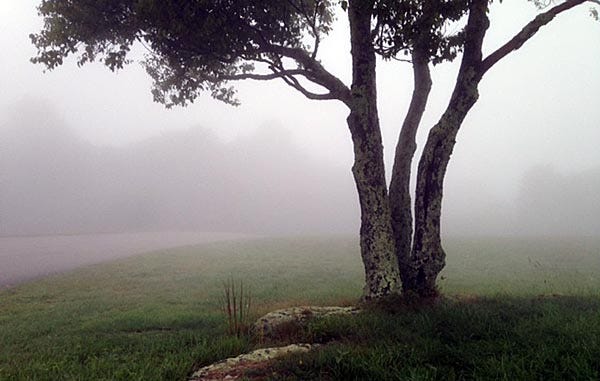

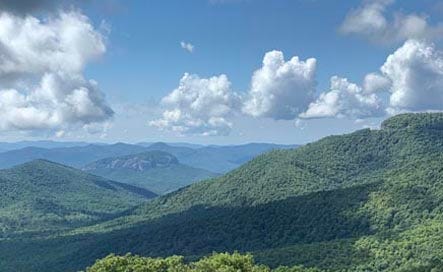



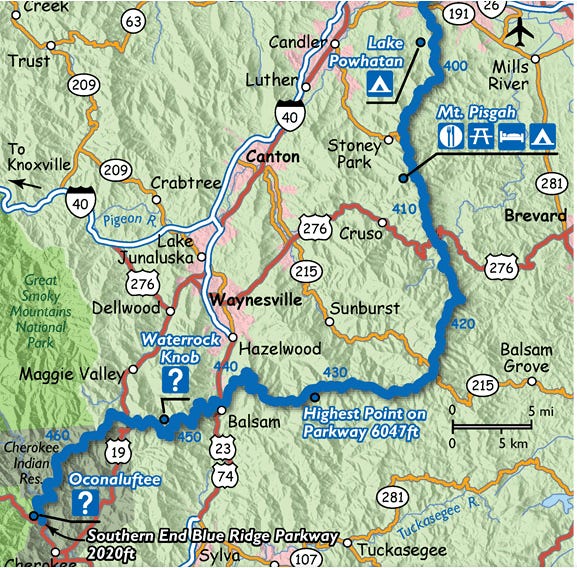

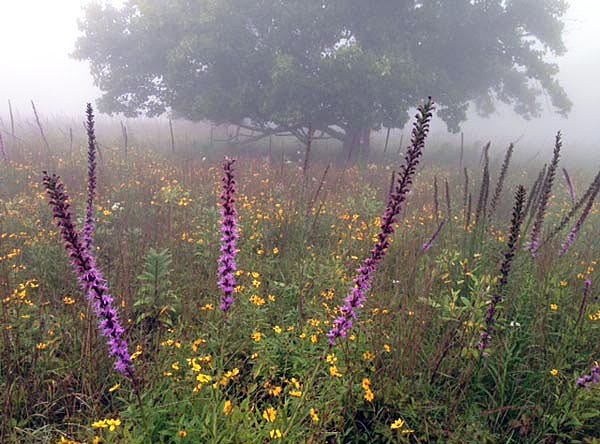
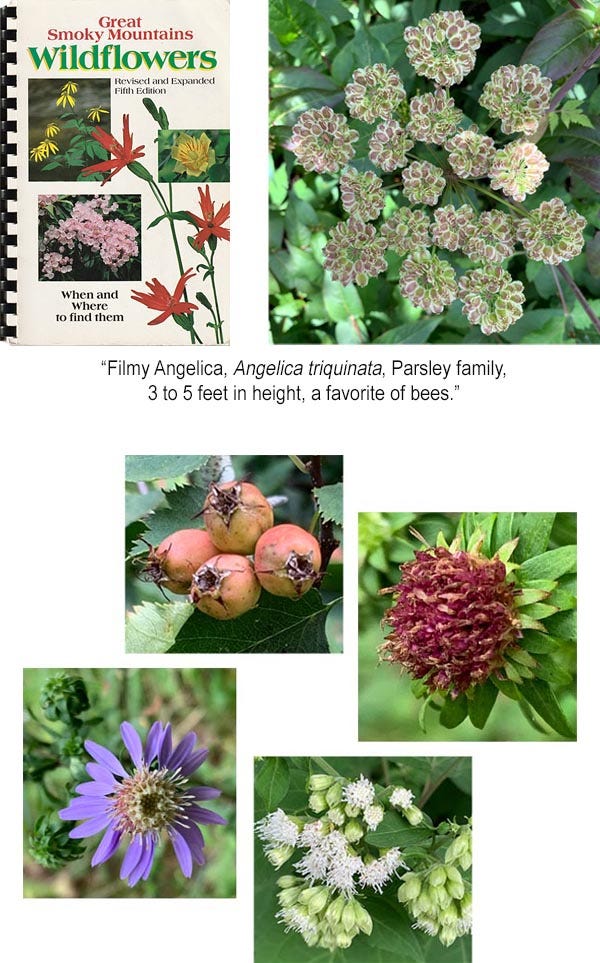


Thank you. I’m sharing this.
Yes! Vote Democrat now and in the future, if we are to have a future